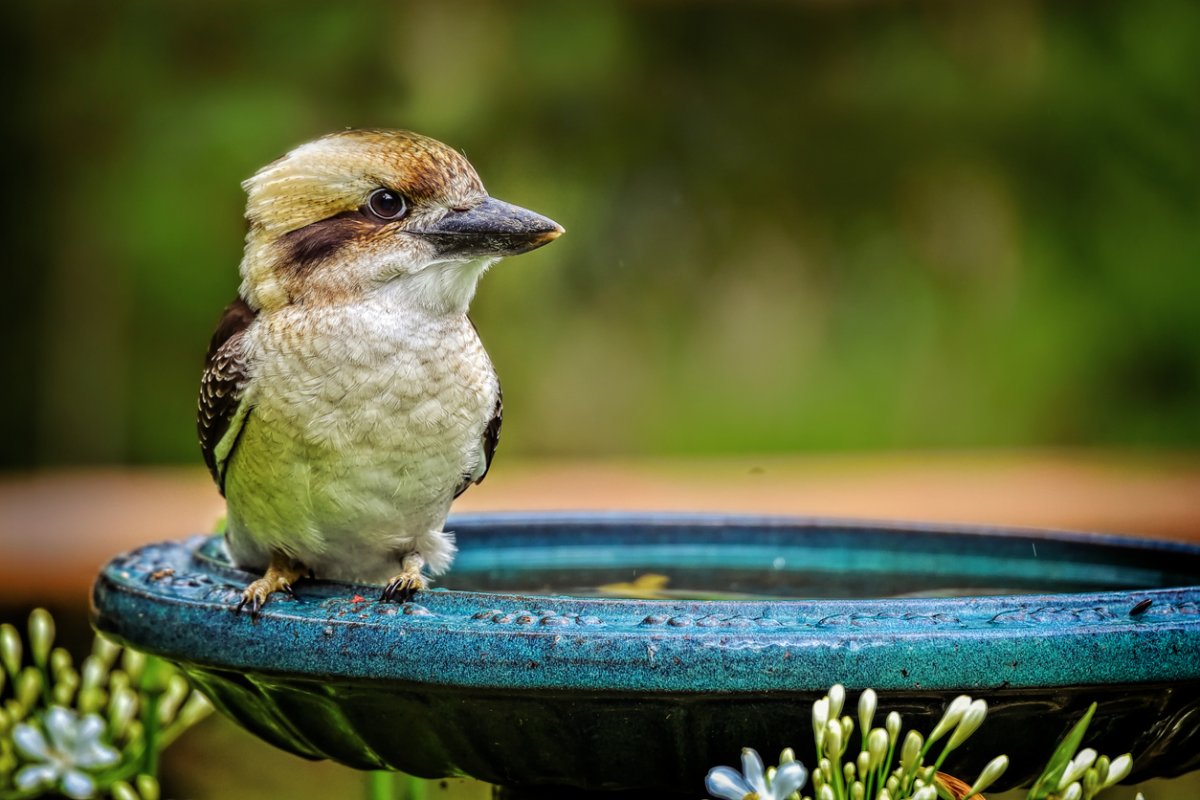

We may earn revenue from the products available on this page and participate in affiliate programs. Learn More ›
Adding a bird bath to your yard is a fantastic way to attract a variety of birds and give them a much-needed water source.
If you place your bird bath in the wrong spot, however, it can do more harm than good. As Brian Cunningham, Director of Outreach & Nature Education at Wild Birds Unlimited, explains, “Bird bath location is important for the birds to feel safe to drink and bathe.”
Let’s dive further into why the bird bath placement matters and how to choose the perfect spot to keep your feathered friends safe and happy.
The Importance of Water for Birds
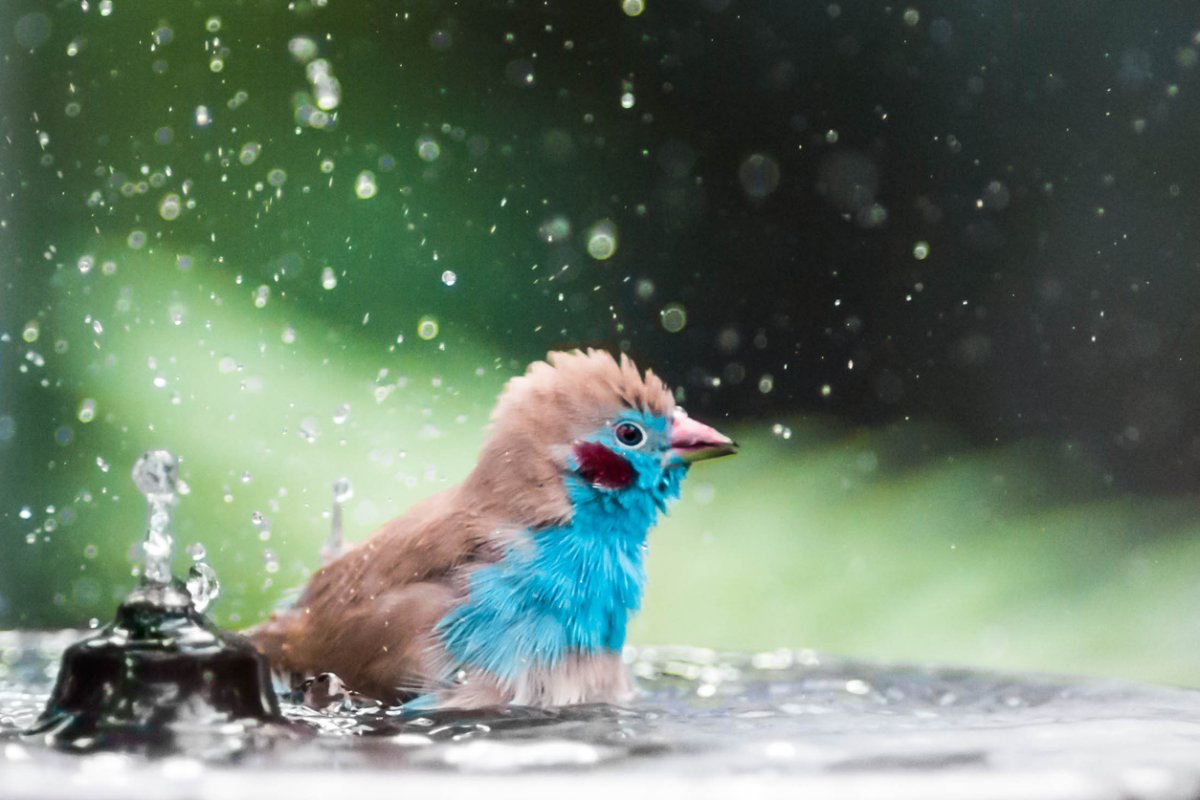
Birds need water not just for drinking but also for bathing. Bathing in a bird bath helps them keep their feathers in top-flight condition, which is crucial for their survival in any season. Cunningham says, “Offering a dependable source of clean water, such as with a bird bath, is one of the simplest and most important steps you can take to greatly increase the variety of birds in your yard.”
“Water is vitally important during the high temperatures of a routine summer, when a bird’s ability to regulate its own body temperature can become stressed,” explains Cunningham. He adds, “Birds do not sweat and must remove excess body heat through their respiratory system”. When temperatures rise, their respiration rate increases, leading to dehydration. A quick and reliable source of water is essential for them to replace lost fluids.
Safe Distance From Bird Feeders

Placing your bird bath directly under bird feeders might seem convenient, but it’s a big no-no. Bird droppings and feeder debris can fall into the water, creating a breeding ground for mold and bacteria. This can make the water unsafe for birds, potentially causing illness. Instead, place your bird bath at least 10 to 15 feet away from feeders.
Away from Windows

Birds can easily become disoriented and crash into windows, leading to injury or even death. Avoid placing your bird bath too close to your house’s windows. If you do want it near a window for easy viewing, consider making the window safer by installing decals or stickers on the glass to make it more visible to birds.
Not Too Close to Shrubs or Trees
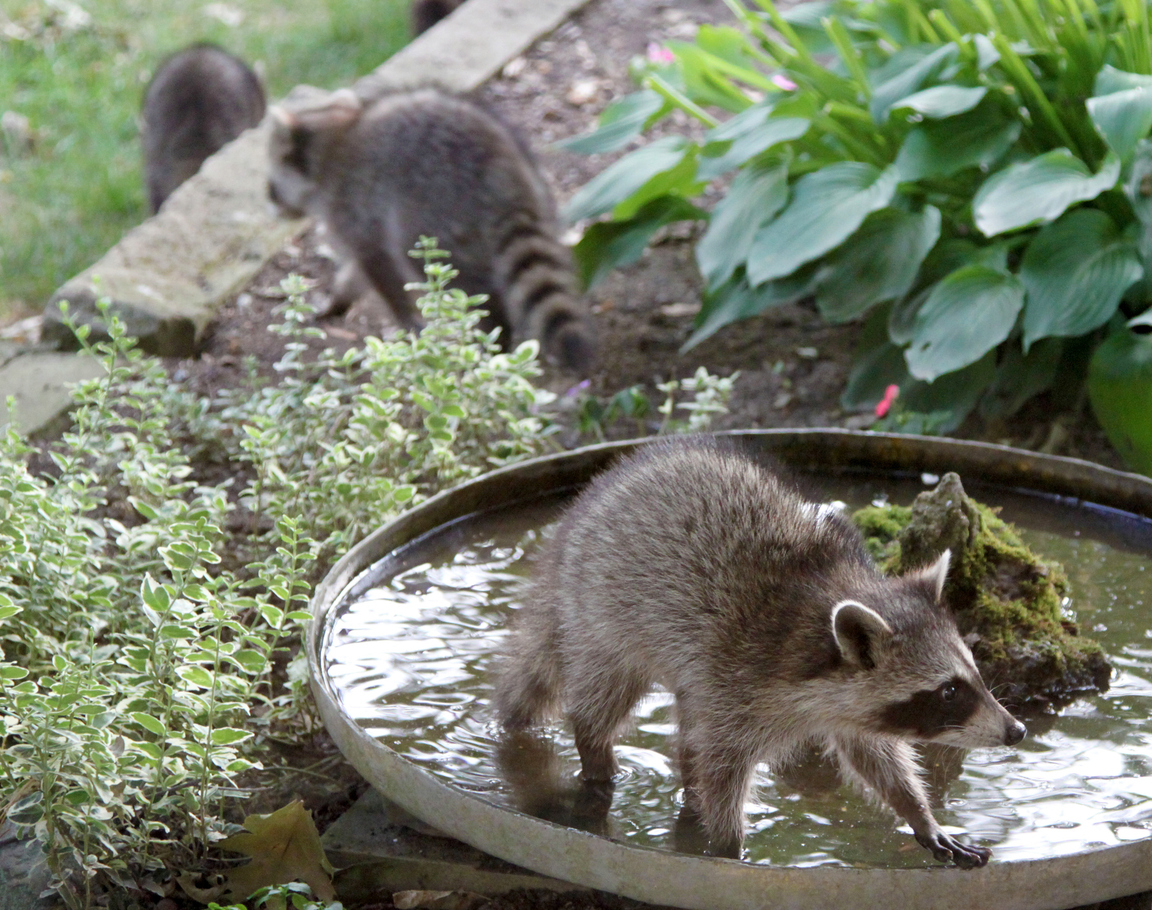
While it’s important for backyard birds to have nearby cover to escape predators, placing a bird bath right next to a fence or dense shrub can put them at risk. Predators like cats or raccoons can use these structures to ambush unsuspecting birds. Instead, Cunningham says, “Place your bird bath 10 to 15 feet from shrubs so predators can’t sneak up on the birds at a bath.” Having the shrubs a few feet away offers the birds a “nearby place to duck into cover from predators as well as a safe place to preen after bathing.”
In a Shaded Area
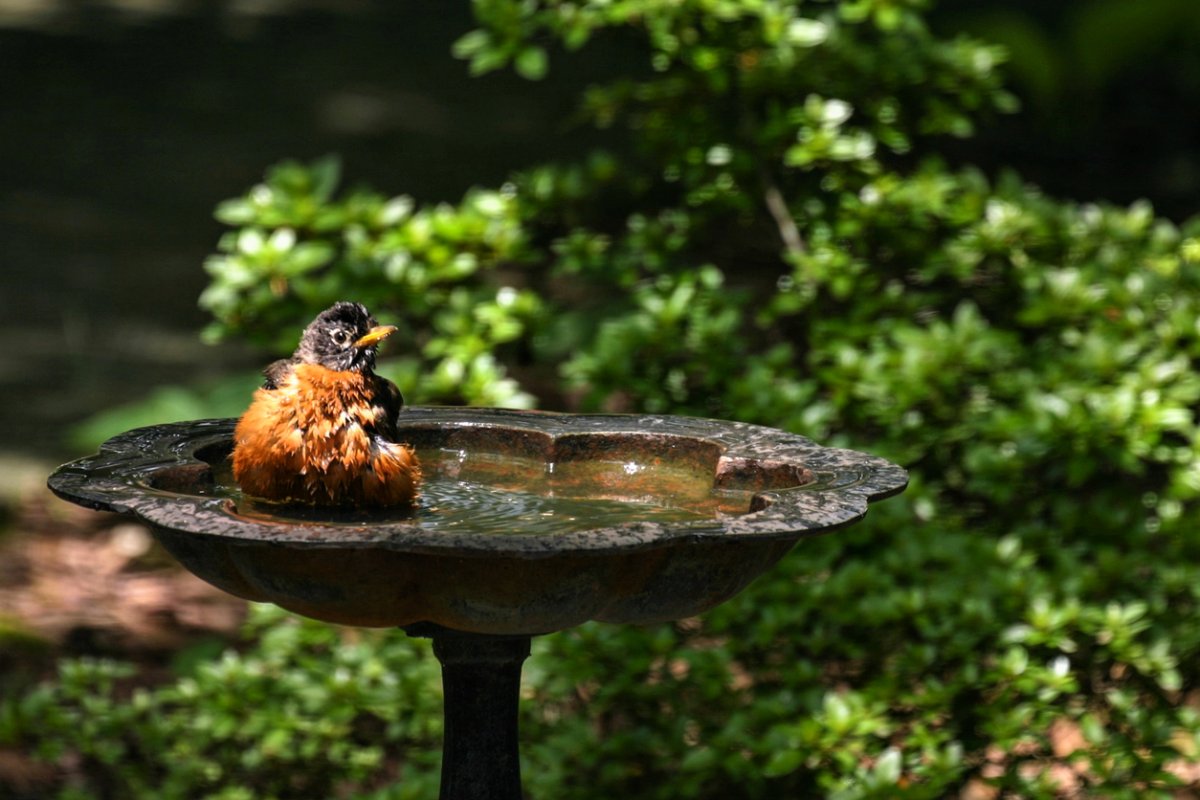
To keep the water cool and fresh, place your bird bath in a shaded area. In some states, the intense midday sun can heat the water in your bird bath uncomfortable or even dangerous levels. Cunningham adds, “Baths should be located in a shaded area to discourage the growth of algae.”
Near Ground-Level Plants
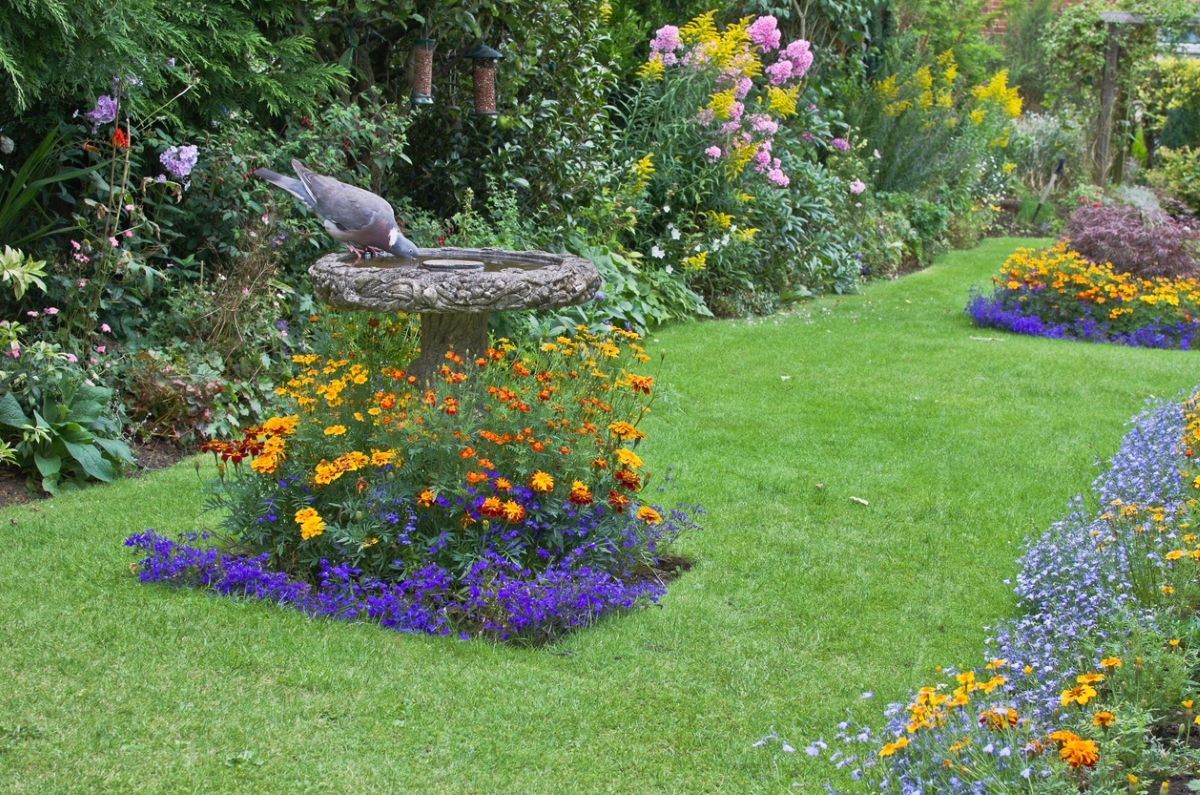
Ground-level plants can provide birds with a naturalistic setting for their bath. But make sure the bath is still elevated enough to keep it safe from ground predators. A bird bath pedestal can be useful here. Make sure there’s enough open space around the bath for birds to spot any approaching danger.
Maintenance Matters
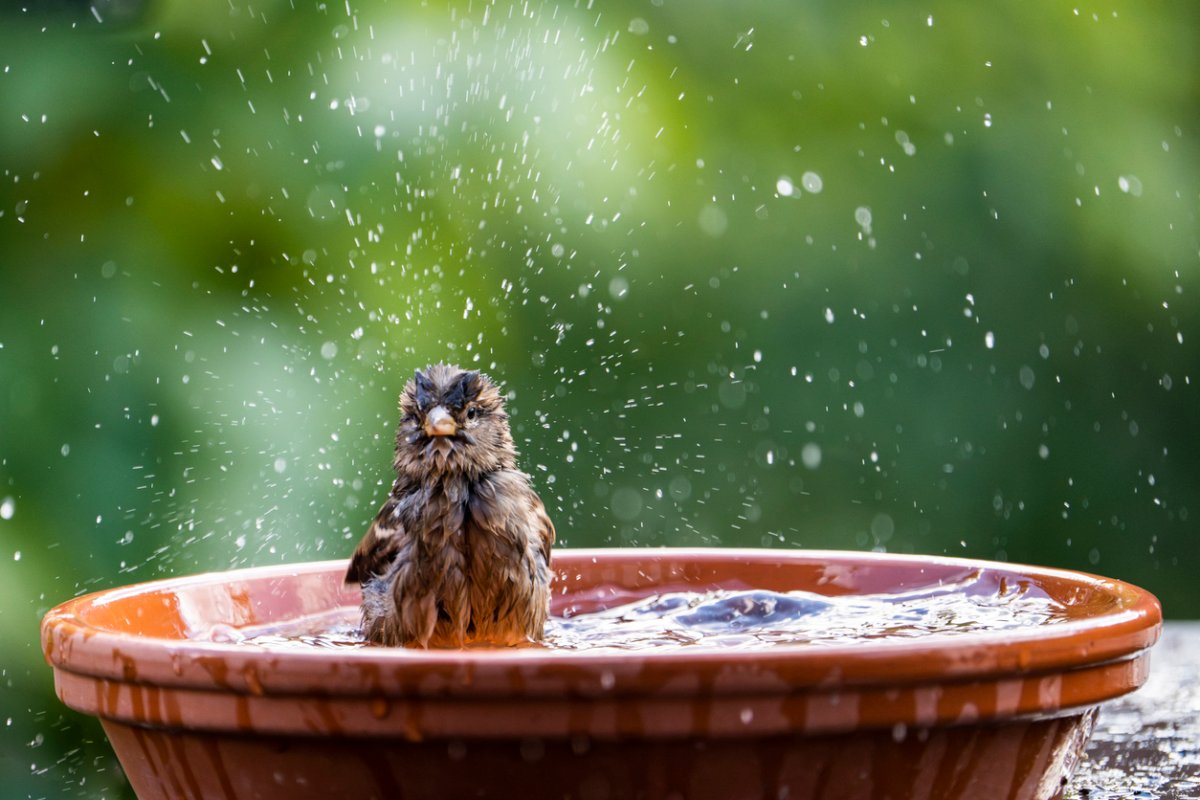
Regular maintenance is key to keeping your bird bath a safe and inviting spot for birds. “The water should be changed every few days depending on weather conditions,” advises Cunningham. In terms of cleaning, he says, “Sanitize the bath as needed with a 10% bleach solution; use a stiff brush to scrub if necessary. Rinse, dry, and refill with fresh water.”
Final Thoughts
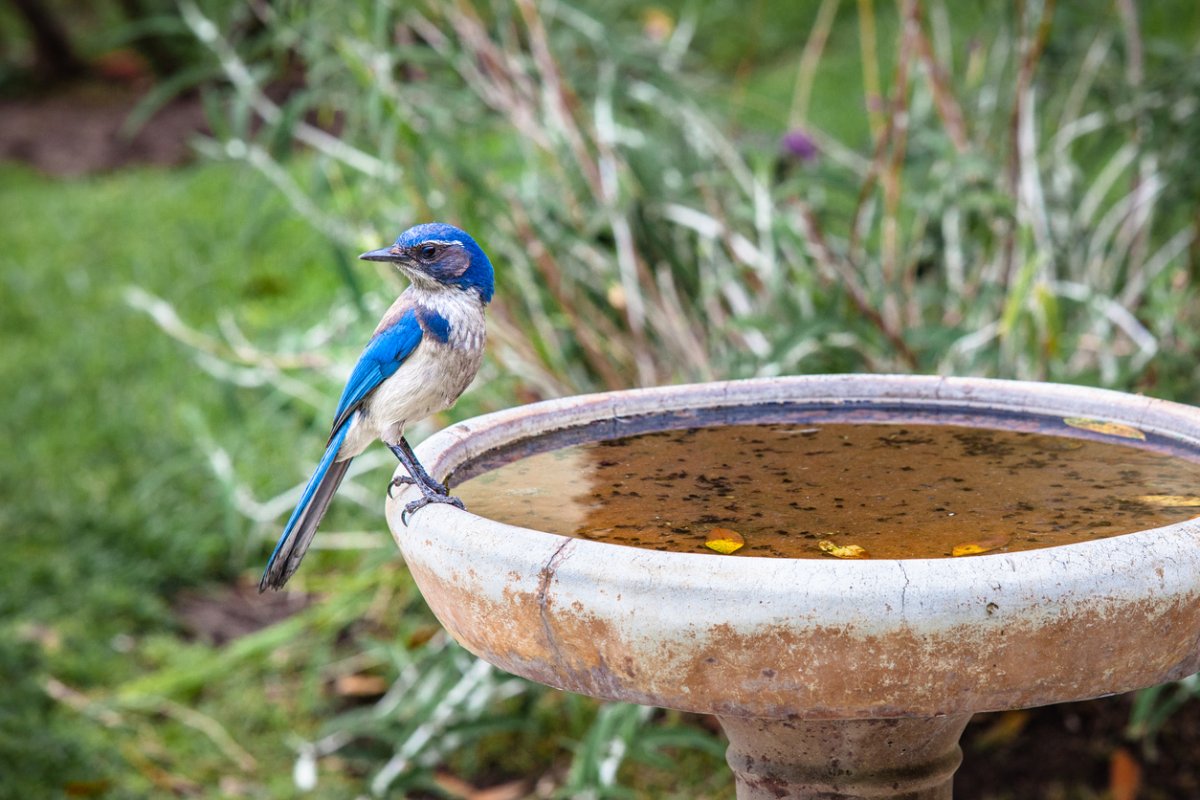
Choosing the right spot for your bird bath can make a world of difference for your local bird population. By following these guidelines, you’ll provide a safe and refreshing oasis that helps birds stay healthy and hydrated. Remember, the right placement not only benefits the birds but also enhances your bird-watching experience. So, take a moment to evaluate your yard and find the perfect spot for your bird bath.
